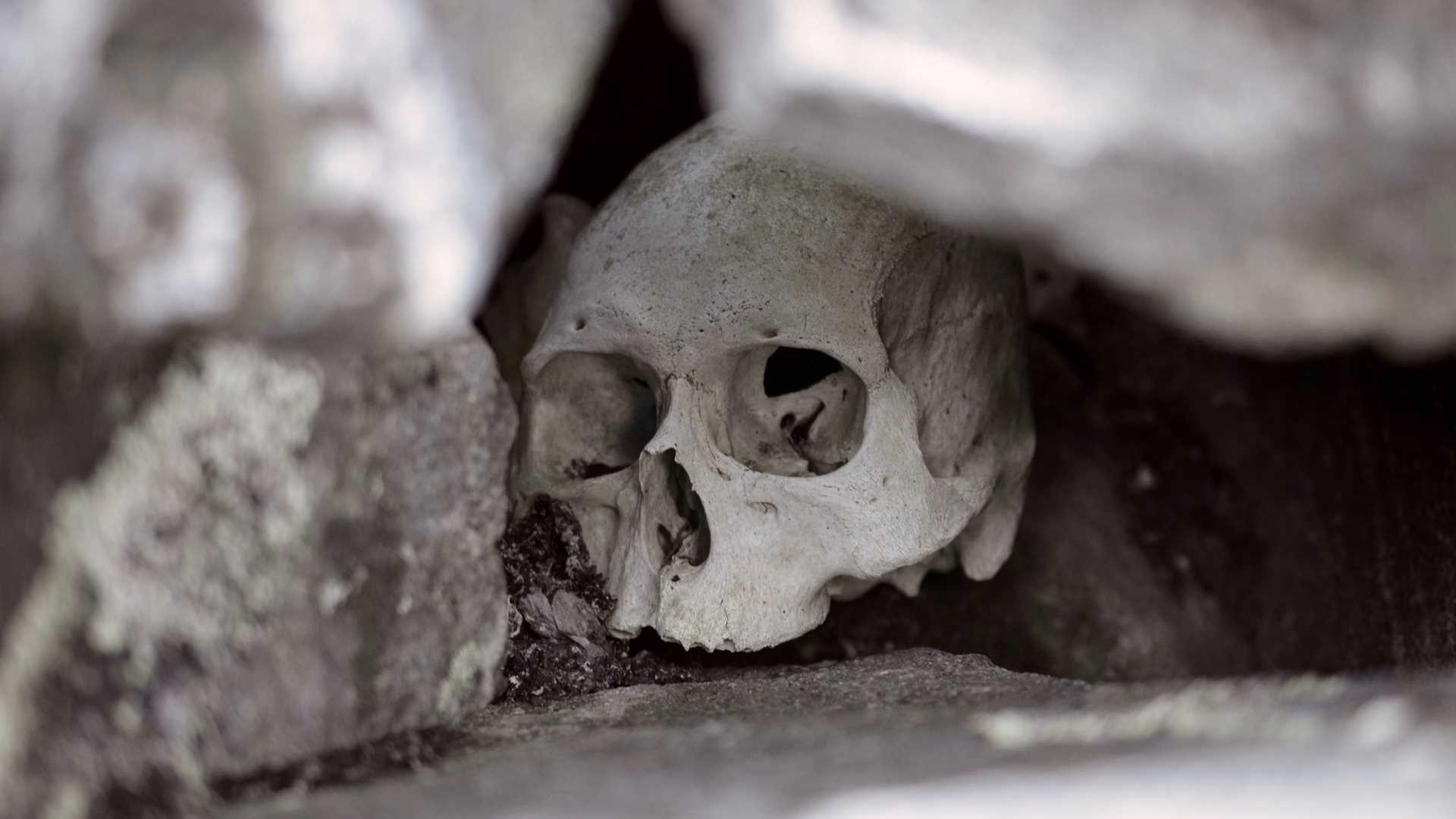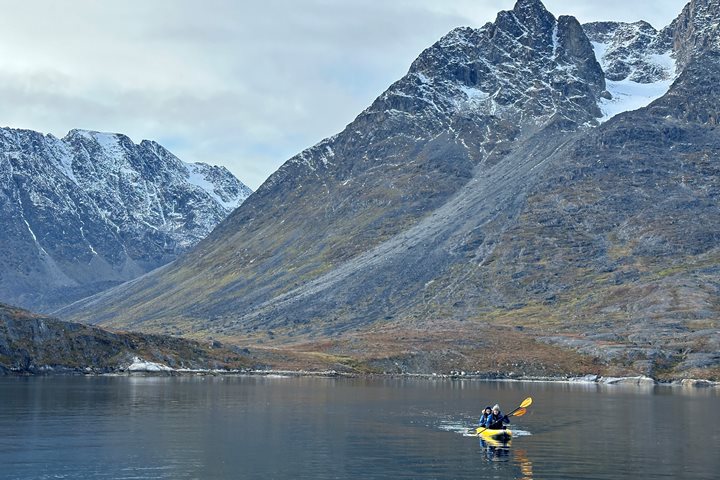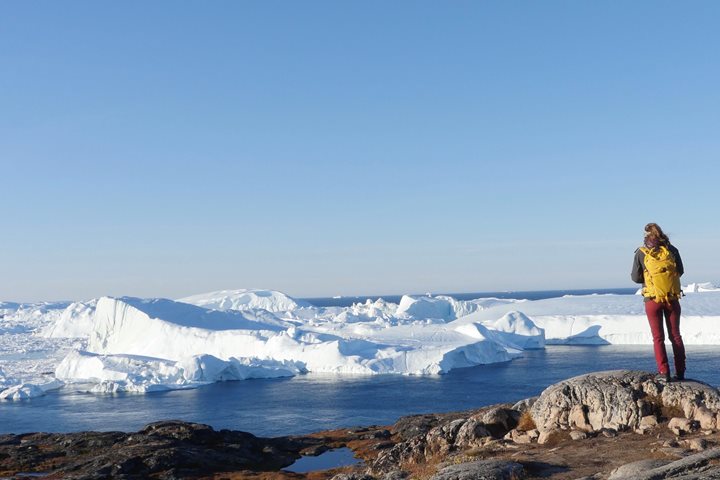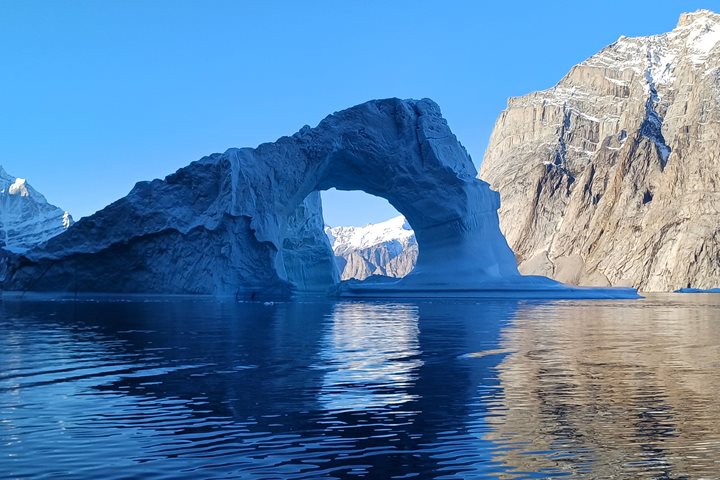This morning looks and feels like autumn. We are cruising south along the west coast of Greenland. The sky is overcast, but not with thick clouds. There is a chill in the air, but not cold. The sun is low in the sky, as it should be first thing in the morning, strange after so many long, long days in the High Arctic. We are no longer there, we have moved south of the High Arctic. Here it is slightly warmer, a little moister, a longer growing season.
In the afternoon we make a landing at Qilakitsoq, otherwise known to us as the ‘mummy site.’ Qilakitsoq in a very small bay cut into the side of a fjord. The sides of the bay are hundreds of feet high enclosing a small, green amphitheater, hence the name Qilakitsoq, land of the small sky. It is said to be a former Inuit settlement, long abandoned. I would have abandoned it too, if for no other reason than all the mummies! In 1972, two hunters came upon what they thought was a doll under some rocks. It was not a toy to delight a child, it was a child, a mummy! In all there were eight mummies: three women stacked on one another in one simple stone tomb and another three women also stacked with two children on top of them. It was the smallest child, just days old that the hunter mistook for a doll.
The Qilakitsog mummies provided a great deal of information on the 15th century Thule people, ancestors of the present day Inuit in this area. The clothing and various ornaments were naturally preserved. The mummies are now in Greenland’s national museum in Nuuk. There are many stories and speculations about the mummies, just search the web for Qilakitsoq mummies. What you will not find information on is the other remains at this site, there are lots of bones and other skeletal parts under rocks and mounds of rocks. A bit of a creepy place to be living, like living in a cemetery, but there are the remains of four winter homes here. Who were those people?
Still, Qilakitsoq is a nice place to explore. The tundra is a multitude of colors. There are greens, a memory of summer not too long past. There are yellows, mostly the small willow shrubs. There are also reds from Arctic blueberries and orange from the glandular birch. But look closer, there are many other colors little effected by the change of seasons. There are lichens growing on the rocks, on the ground and on and within the mosses. Many of the lichens are black, the better for absorbing the heat of the sun. Some are yellow or orange, the color of their UV blocking chemicals. Some are just green. Two of the lichens on the rocks are quite famous, in some circles, as they were sent to outer space! For 15 days they were exposed to temperatures ranging from -20° C to +20° C. They were by very high UV radiation. They were also dehydrated. When the capsule was recovered the lichen astronauts were rushed to the lab. Within 24 hours, they had rehydrated and were photosynthesizing as though nothing had happened! Lichens rule!







